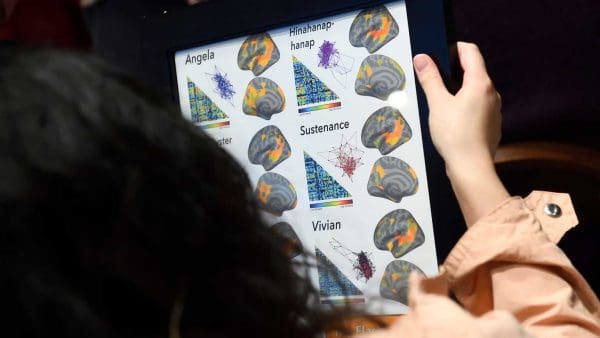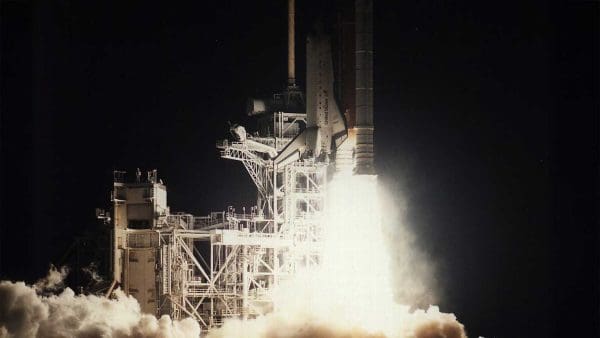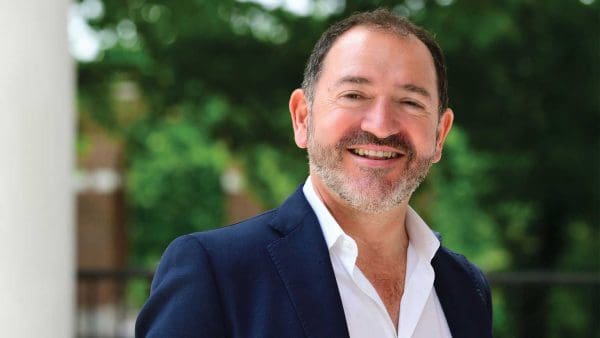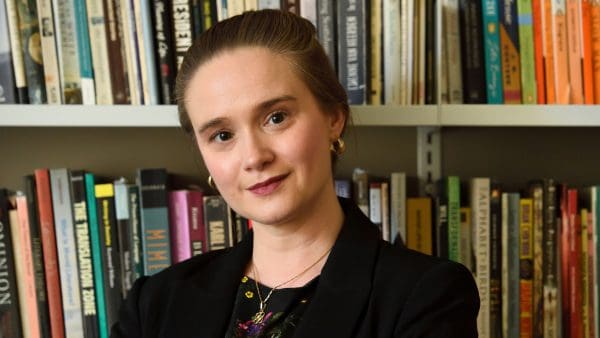
David Kaplan is a theoretical physicist at Johns Hopkins University, where he studies dark matter, supersymmetry, and the properties of the Higgs boson. But seven years ago he wanted to do something really hard. So he decided to make a movie.
Specifically, Kaplan decided to make a full-length feature film about the Large Hadron Collider. The LHC is an almost 17-mile tunnel beneath the France-Switzerland border, where physicists smash tiny particles into each other at incredible speeds and look for new physics among the wreckage. About 10,000 scientists from more than 100 countries have a hand in this project, on which construction began in 1998, and which has been operating—albeit with some significant glitches—since 2009. With temperatures colder than empty space, the strongest magnets ever created by humans, and the dreams of thousands of physicists riding on it, the LHC is one of the highest-stakes science experiments in history. And Kaplan has about 100 minutes to tell its story.
According to Kaplan, if the LHC doesn’t deliver spectacular new insights into the universe, the fear is that no government will ever finance such an ambitious physics experiment again. And scientists truly don’t know what their experiments will tell them. “This entire generation of physicists has never seen data that has refuted or supported any of our theories,” Kaplan says. For more than a decade, he has been talking about his field’s moment of truth to anyone who will listen. And in 2005, one of his friends (who is not a physicist) recognized how crucial the LHC was to the future of particle physics, and suggested he document the story as it unfolded. Kaplan—a former film student—pondered the idea for a while, and decided to make a documentary, with the title Particle Fever.
The next steps were to raise money and recruit a director, editors, producers, and other essential personnel. Kaplan says the linchpin of the team is Mark Levinson, a particle physicist from University of California, Berkeley, who has been directing the film since 2008. The crowning achievement for the team last year was attracting JHU alumnus Walter Murch ’65, famed film editor and sound designer. Murch has a combination of experience on big-name films such as The Godfather, The Godfather: Part II, and Apocalypse Now, and a deep interest in the material. “Walter Murch has three Oscars,” Kaplan notes. “He also happens to be obsessed with physics.” With the final piece of the puzzle in place, Kaplan hopes the team will complete the film this year.
The movie focuses on seven people involved in the LHC: three theorists (including Kaplan), three experimentalists, and one engineer. The film follows them at work, tells a bit of their back story, and shows them in moments of tension and triumph. Nothing was scripted, and no actors were hired; the scientists tell their stories through interviews and by allowing the camera to follow them as they work, in the cinéma vérité style.
Kaplan fills in gaps in the story and provides necessary background. For instance, the film has him explaining the importance of the Higgs boson, a particle that was predicted in 1964 and is absolutely necessary to the Standard Model of elementary particles that all physicists believe in, but, at least until last year, remained only a twinkle in their eyes. “Without the Higgs, life as we know it wouldn’t exist,” says Kaplan. The first experiments scientists conducted with the LHC involved searching for the Higgs.
But before that, there was “first beam”—the tense moment when the collider came to life for the very first time. The film shows hundreds of physicists anxiously buzzing around the control room to watch a screen that will provide confirmation—or not—that protons are actually whizzing through the collider’s ring as intended.
“I don’t think I can describe right now the excitement of first beam,” says Monica Dunford, one of the experimentalists the movie follows. “The entire control room is like a group of 6-year-olds.”
The five-second countdown begins. Three. Two. One. Nothing happens. Silence. Then somebody says something, something is done on a computer, another countdown is given. A white dot shows up on the screen with a chirp, and the room erupts into applause and high-fives: the enormous, multibillion-dollar machine worked.
But that initial excitement was short-lived: nine days later a helium explosion damaged many of the collider’s superconducting magnets. As a result, the machine was shut down for over a year. While excruciating for LHC scientists, the delay actually helped the film by making room for explanatory sequences and other breaks in the action, says Kaplan.
Once the LHC was back up and running, the hunt for the Higgs boson resumed. “If the Higgs exists, this experiment will find it,” Kaplan says in the film. And last summer the experiment did find it—or at least it found a particle with all the properties the Higgs was predicted to have. (Physicists are still analyzing the data to make sure it’s the Higgs and not some other previously unsuspected particle—which would be even more exciting.)

Kaplan’s goal is to bring the story of the LHC to as broad an audience as possible. So his next big challenge is getting his movie into the world. He’s in the process of shopping it to big-name film festivals, in the hope that it will get picked up by a major distributor; he’s also thinking of alternative arrangements, like having it screened simultaneously in science museums around the country. But mainly he’s concentrating on making a movie that people will want to watch. The best way to sell the movie, he says, “is to make a great movie.”




